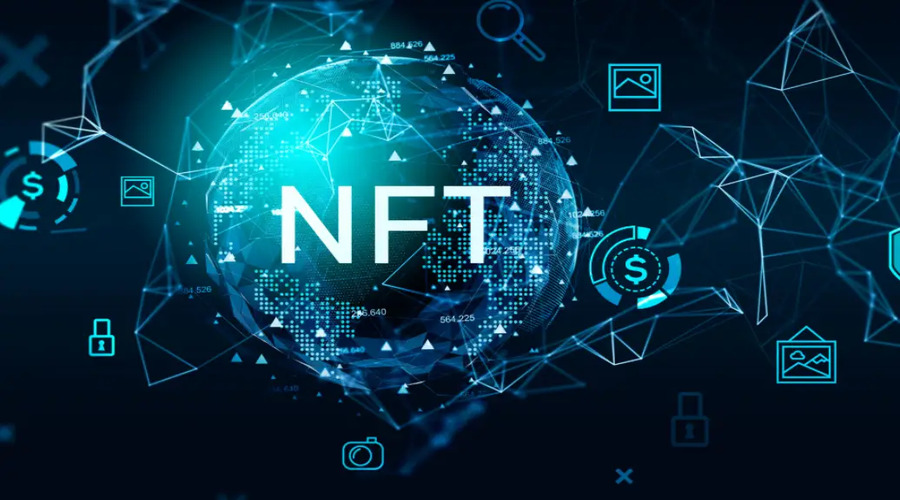Understanding NFT Tokens: A Beginner’s Guide

If you’ve been paying attention to the latest trends in the digital world, you may have heard about NFT tokens. NFTs, or non-fungible tokens, have taken the art world storm, and they’re quickly gaining traction in other industries as well. But what exactly are NFTs, and why are they important? In this beginner’s guide, we’ll answer these questions and more.
What are NFT Tokens?
To understand NFTs, it’s important first to understand the concept of fungibility. Fungibility refers to the ability of something to be replaced something else that is exactly the same. For example, a dollar bill is fungible because any other dollar bill can replace it.
NFTs, on the other hand, are non-fungible. This means that each NFT is unique and cannot be replaced something else. NFTs are created using blockchain technology, which allows for the creation of digital assets that are one-of-a-kind and cannot be replicated.
How do NFT Tokens work?
NFTs are created using smart contracts on a blockchain network, usually Ethereum. A smart contract is a self-executing contract that automatically enforces the terms of an agreement. In the case of NFTs, the smart contract specifies the unique attributes of the digital asset and verifies its ownership.
NFTs can be used to represent a wide range of digital assets, including art, music, videos, and even tweets. When someone purchases an NFT, they are purchasing ownership of the digital asset that the NFT represents.
Why are NFT Tokens important?
NFTs are important because they allow for the creation of unique, verifiable digital assets. This has huge implications for the art world, where NFTs are being used to sell digital artwork for millions of dollars. NFTs also have potential applications in other industries, such as gaming, where they can be used to represent in-game items and currency.
How do I buy and sell NFT Tokens?
Buying and selling NFTs is done through online marketplaces, such as OpenSea or Nifty Gateway. To buy an NFT, you’ll need to have a digital wallet, such as MetaMask, and enough cryptocurrency to make the purchase. Selling an NFT works similarly, with the owner setting a price and listing the NFT on a marketplace.
What are the advantages of using NFT Tokens?
One of the main advantages of using NFTs is the ability to create unique, verifiable digital assets. This opens up new possibilities for artists and creators to monetize their work. NFTs also offer a level of transparency and security, as each transaction is recorded on the blockchain and cannot be altered.
What are the disadvantages of using NFT Tokens?
One potential disadvantage of using NFTs is the environmental impact of blockchain technology. The process of creating and verifying transactions on a blockchain network requires a significant amount of energy, which has raised concerns about the carbon footprint of NFTs. Additionally, the high prices of some NFTs have been criticized as being inaccessible to many people.
The History of NFT Tokens
While NFTs have recently gained a lot of attention, their origins can be traced back to 2012, when the concept of using blockchain technology to create unique digital assets was first proposed. However, it wasn’t until the popularity of CryptoKitties in 2017 that NFTs gained mainstream attention. CryptoKitties was a game that allowed users to buy, sell, and breed virtual cats, with each cat represented a unique NFT. Since then, NFTs have exploded in popularity, with sales of NFTs totalling over $2 billion in the first quarter of 2021 alone.
Examples of NFTs in Use
While NFTs are often associated with the art world, they can be used to represent a wide range of digital assets. Some examples of NFTs in use include:
- Digital Art: NFTs are being used to sell digital artwork for millions of dollars, with artists such as Beeple and Pak gaining widespread recognition for their NFT-based works.
- Music: Musicians are using NFTs to sell unique digital albums and songs, with artists such as Grimes and Kings of Leon releasing NFT-based albums.
- Gaming: NFTs are being used to represent in-game items and currency, with some games allowing players to buy and sell NFTs on marketplaces.
- Sports: Sports organizations are using NFTs to sell digital collectibles, with the NBA and NFL both launching NFT-based collectibles.
The Future of NFT Tokens
While NFTs are still a relatively new concept, their potential applications are vast. NFTs could be used to represent anything from virtual real estate to identity documents, and their unique properties make them an ideal solution for digital ownership and verification. However, challenges must be addressed, such as the environmental impact of blockchain technology and the potential for NFTs to perpetuate inequalities in the art world.
How to Create Your Own NFT
If you’re interested in creating your own NFT, there are a few steps you’ll need to follow:
- Choose a blockchain platform: Most NFTs are created using the Ethereum blockchain, but other platforms are also available.
- Create your digital asset: This can be anything from a piece of art to a tweet, but it should be unique and verifiable.
- Mint your NFT: This involves creating a smart contract that verifies your digital asset’s ownership and unique attributes.
- List your NFT for sale: You can list your NFT on a marketplace such as OpenSea or Nifty Gateway, setting a price and waiting for a buyer.
Conclusion
NFTs are a new and exciting development in the digital world, with the potential to revolutionize how we think about digital ownership and monetization. While there are challenges to be addressed, the future of NFTs looks bright, and we can expect to see them being used in a wide range of industries in the coming years.
I’ve been involved with cryptocurrency for three years. I have been a vocal advocate for the people and an active part of the community. I am well-known for my book “Crypto Revolution: An Insider’s Guide to the Future of Money” and blog “The Crypto Chronicles.” In addition, I frequently contribute to CoinDesk, one of the top news websites for cryptocurrencies. I write as well as invest actively in a number of bitcoin initiatives.
